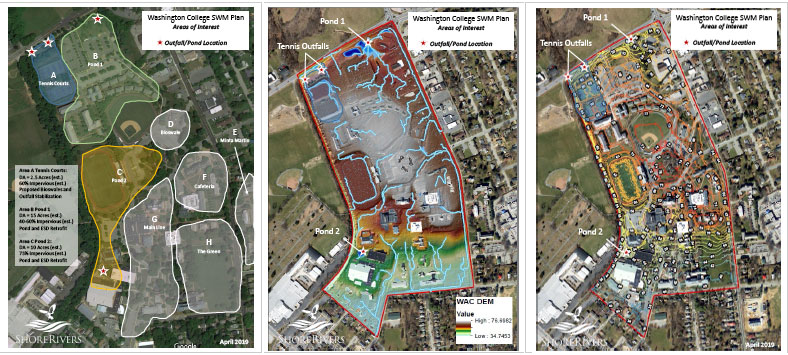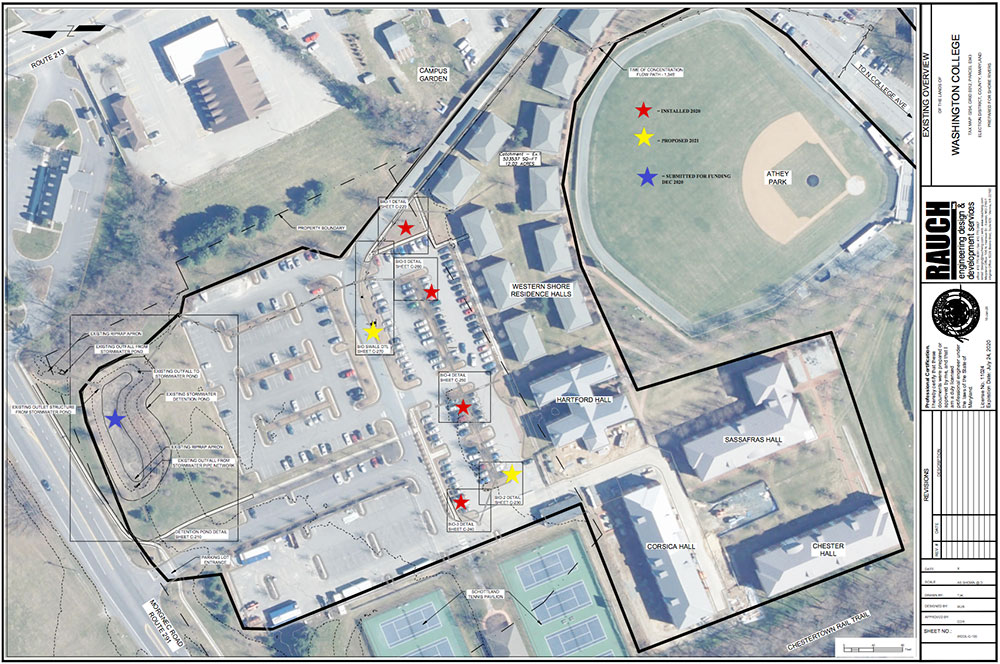Stormwater Sanctuary
Washington College is committed to recharging its soils with rainwater to promote the health of the Chesapeake Bay watershed.
 A Model Waterfront Campus
A Model Waterfront Campus
In a flagship demonstration of our ecological commitment, at Semans-Griswold Environmental Hall, a loose stone parking lot and drive slows rainwater till it soaks into a native meadow overlooking the Chester River. Footpaths use a pervious product produced by Stanchills, and two bio-retention ponds provide overflow support during heavy rain events.
 The College on the Hill
The College on the Hill
At one of the highest elevation points in Chestertown, we have a number of water catchment features that model the permaculture practice of slowing and sinking water as high on landscape as possible.
 Community Collaboration
Community Collaboration
In a partnership with ShoreRivers, Chester Riverkeeper Program, our campus has installed four mini-bioretention practices to reduce runoff into Radcliffe Creek, a tributary of the Chester River. We plan to continue partnering on more regenerative stormwater conveyances, attractive native plantings, and signage. ShoreRivers is helping us improve water quality, habitat, and aesthetics while also providing educational opportunities for our student body and campus visitors.
 Seeding Meadows
Seeding Meadows
We're working on turning mowed turf into meadow plantings in prominent areas around campus to increase water infiltration, pollinator habitat, and decrease our carbon footprint. Future locations include the islands in the back parking lot and north of the main campus entrance. The meadows support our Bee Campus USA advocacy.
 Soil Amendments
Soil Amendments
Our Compost Team is a powerhouse addition to the greening of our campus. Students are promoting organics recycling at the Campus Garden to increase the water holding capacity of our campus soils during rainstorms.
 Toward a Biodiverse Landscape
Toward a Biodiverse Landscape
While we've started with the most impactful projects to reduce water and nutrient runoff, we see more opportunities to champion ecological stewardship.
From the baseball field border to pocket gardens sprinkled around prominent campus pathways, we are working to integrate beautiful native plants in support of our arboretum and an ongoing commitment to our Tree Campus High Education certification.
Our Grounds team is committed to removing invasive plant species and increasing the number of native plant species represented to promote water catchment and wildlife habitat. Their effort is underscored by the Center for Environment and Society's Natural Lands Project and the research of ethnobotanical uses of indigenous plants by the Eastern Shore Food Lab.
 Wild Green Vision
Wild Green Vision
To address stormwater ponding at the base of the Campus Green, Emily Castle '18 developed a design for a bioswale for her Environmental Studies senior capstone project. Her plant selection showcases native and edible species. This project is on our shortlist to accomplish.

